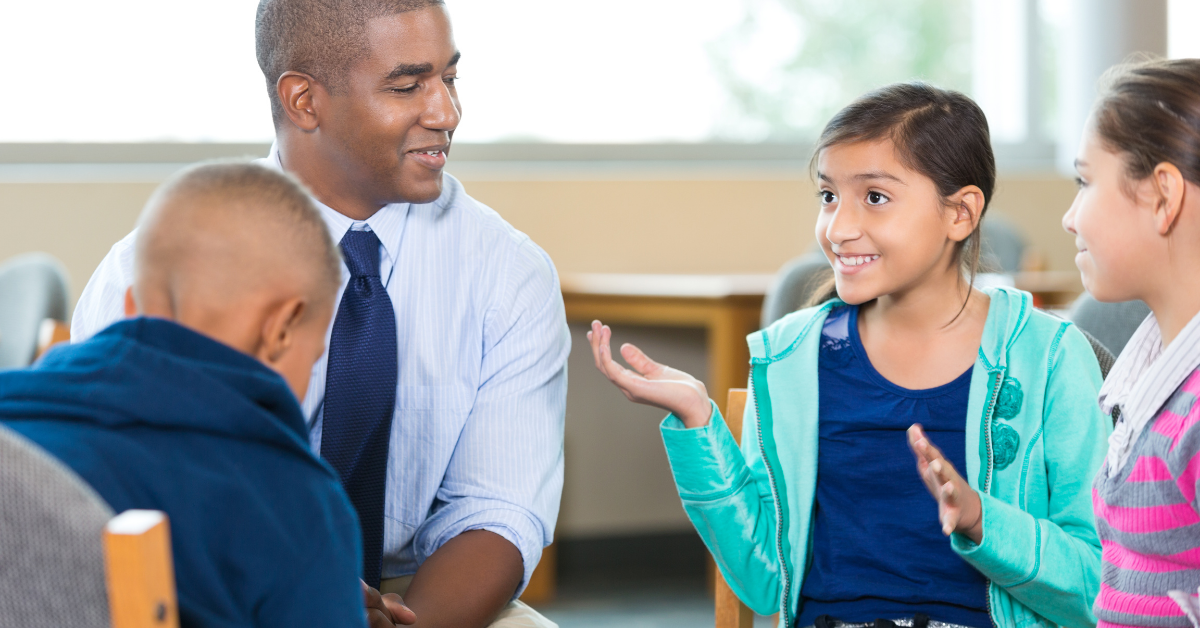
Need to Know
- Verbal reasoning helps us make sense of what we read and hear.
- These skills are central to student performance assessments. They’re also useful to us in the real world.
- Elements of verbal reasoning are embedded in most language/literacy curricula, but we can support students by supplementing these materials with targeted skills practice.
A Closer Look
Verbal reasoning helps us make sense of what we read and hear. These skills facilitate literacy by enabling us to make predictions, inferences, and connections. Ultimately, verbal reasoning makes it possible to access complex content through spoken and written word. Kids and teens are assessed on these skills at school, but we rely upon them in the real world, too. Verbal reasoning skills are essential for 21st-century thinkers—and they’re just as important in the history, math, or art room as they are in the language arts setting!
In the classroom, we run into six types of verbal reasoning questions:
- Logical sequence of words
- Classification
- Analogy
- Puzzles
- Cause and effect
- Verification of truth (True/False)
Logical sequence of words
Logical sequencing exercises kids’ reasoning muscles. It asks the doer to place a series of words into a meaningful and logical order. Sometimes, these questions can appear simple but require effortful consideration.
Example: Place the following words in a logical sequence:
- a) classroom
- b) bus
- c) home
- d) bus stop
- e) school.
Best answer: c, d, b, e, a.
Classification
When kids classify objects, words, or thoughts, they’re doing more than just sorting by qualities and characteristics. They’re problem-solving and laying a foundation for more complex critical thinking capabilities.
Example: Choose the word that is least like the other members of the group:
- a) daffodil
- b) marigold
- c) sweet pea
- d) begonia
- e) lily
Answer: Sweet pea is fruit/vegetable producing; the others are not.
Analogy
Most of us have used analogies in the classroom. But what are they, exactly? “An analogy,” says Paul Bartha for Stanford, “is a comparison between two objects, or systems of objects, that highlights respects in which they are thought to be similar. Analogical reasoning is any type of thinking that relies upon an analogy.” The use of analogies accelerates learning, increases retention, and boosts conceptual development.
Example: bees : hive :: bears : _____
Best answer: den.
Puzzles
Verbal reasoning can be practiced and assessed via puzzles. Besides being fun, puzzles offer a range of cognitive benefits: they engage both brain hemispheres, develop spatial reasoning, spur creative thinking, and improve memory.
Example: Solve for this word if D=E, K=L, and T=U. “bqqmf”
Best answer: crrng
Cause and effect
Cause and effect statements highlight the relationship between two events. Something happens (cause), which results in something else occurring (effect). These verbal reasoning questions are common in performance assessments, but they have a practical purpose, too. Ashle Bailey-Gilreath for Learning and the Brain explains that “Cause-and-effect thinking, or causality, allows us to make inferences and reason about things that happen around us.”
Example: Read these statements and determine the effect.
- a) The principal called for indoor recess.
- b) At noon, it started to rain.
Best answer: a.
Verification of truth
Is it absolutely so? Is the statement true or false? Can one thing exist without the other? When it comes to verbal reasoning, these types of questions are examples of verification of truth. The process of solving these scenarios invites students to draw on background knowledge, practice sense-making, and refine elimination processes.
Example: ‘Bravery’ must include an element of:
- a) surprise
- b) knowledge
- c) courage
- d) kindness.
Best answer: c.
While most language and reading curricula embed verbal reasoning practice, helping students build up these critical skill sets can advance their critical thinking and logic capacity, which will benefit them far beyond their K-12 schooling. Finding captivating and purposeful activities can be a challenge, so WordMasters is an exciting option to consider.
Unlike other language arts competitions for this age group—which focus on grammar, punctuation, spelling, and other language mechanics—the WordMasters Challenge helps students think analytically and metaphorically. The contest addresses higher-level word comprehension and verbal reasoning in two ways:
- It challenges students to complete analogies based on relationships among words they have learned.
- It bases the analogies on unique vocabulary lists, developed for each grade and difficulty level by experienced teachers, which participants are encouraged to study before each meet.
When looking to advance your language arts instruction, join WordMasters Challenge. There’s a world of value in developing these skills in the language arts classroom and beyond.
Want to join the next WordMasters Challenge with your students? Learn more about their latest challenge, launching October 1st, 2021, and check out future challenges, too!


